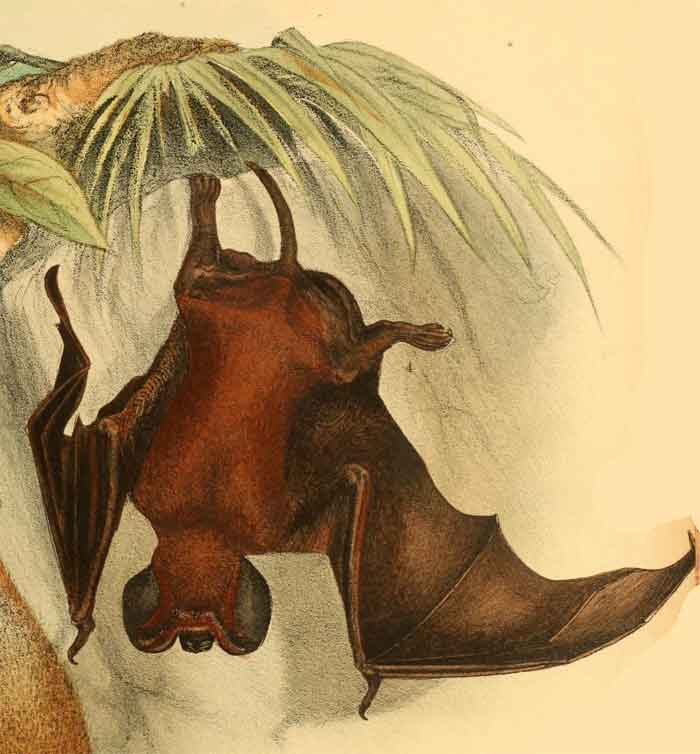
Mops sarasinorum sarasinorum
Superregnum: Eukaryota
Cladus: Unikonta
Cladus: Opisthokonta
Cladus: Holozoa
Regnum: Animalia
Subregnum: Eumetazoa
Cladus: Bilateria
Cladus: Nephrozoa
Superphylum: Deuterostomia
Phylum: Chordata
Subphylum: Vertebrata
Infraphylum: Gnathostomata
Megaclassis: Osteichthyes
Cladus: Sarcopterygii
Cladus: Rhipidistia
Cladus: Tetrapodomorpha
Cladus: Eotetrapodiformes
Cladus: Elpistostegalia
Superclassis: Tetrapoda
Cladus: Reptiliomorpha
Cladus: Amniota
Cladus: Synapsida
Cladus: Eupelycosauria
Cladus: Sphenacodontia
Cladus: Sphenacodontoidea
Cladus: Therapsida
Cladus: Theriodontia
Cladus: Cynodontia
Cladus: Eucynodontia
Cladus: Probainognathia
Cladus: Prozostrodontia
Cladus: Mammaliaformes
Classis: Mammalia
Subclassis: Trechnotheria
Infraclassis: Zatheria
Supercohors: Theria
Cohors: Eutheria
Infraclassis: Placentalia
Cladus: Boreoeutheria
Superordo: Laurasiatheria
Cladus: Scrotifera
Ordo: Chiroptera
Subordo: Yangochiroptera
Superfamilia: Vespertilionoidea
Familia: Molossidae
Subfamilia: Molossinae
Genus: Mops
Subgenus: Mops (Mops)
Species: Mops (Mops) sarasinorum
Subspecies: M. (M.) s. lanei – M. (M.) s. sarasinorum
Name
Mops (Mops) sarasinorum A. Meyer, 1899
Type locality: Indonesia, Sulawesi, Batulappa (North of Lake Tempe).
References
A. Meyer, 1899. Abh. Zool. Anthrop.-Ethnolog. Museum Dresden, 7(7): 16.
Conservation status: IUCN: Mops sarasinorum (Near Threatened)
Mops sarasinorum in Mammal Species of the World.
Wilson, Don E. & Reeder, DeeAnn M. (Editors) 2005. Mammal Species of the World – A Taxonomic and Geographic Reference. Third edition. ISBN 0-8018-8221-4.
Distribution
Sulawesi (Indonesia) and adjacent small islands
Philippines
Vernacular names
English: Sulawesian Free-tailed Bat.
The Sulawesi free-tailed bat (Mops sarasinorum) is a species of bat in the family Molossidae. It is found in Indonesia and the Philippines.
Taxonomy and etymology
It was described as a new species in 1899 by German biologist Christian Erich Hermann von Meyer. Von Meyer placed it in the now-defunct genus Nyctinomus with a binomial of N. sarasinorum.[2] The eponym for the species name "sarasinorum" was Paul and Fritz Sarasin, a pair of Swiss cousins who conducted a research expedition in Sulawesi.[3]
Description
It has a forearm length of approximately 40 mm (1.6 in). Its fur color is variable, with individuals documented with blackish brown, blackish chestnut, or chesnut-brown.[4] Individuals weigh approximately 19.7 g (0.69 oz).[5]
Range and habitat
It is native to Southeast Asia where it is found in Indonesia and the Philippines. It has been found at elevations up to 1,000 m (3,300 ft) above sea level.[1]
Conservation
As of 2016, it is evaluated as a data deficient species by the IUCN.[1]
References
Rosell-Ambal, R.G.B.; Tabaranza, B.; McKinnon, J.; Kingston, T.; Maharadatunkamsi, D.; Wiantoro, S. (2016). "Mops sarasinorum". IUCN Red List of Threatened Species. 2016: e.T13847A22078424. doi:10.2305/IUCN.UK.2016-2.RLTS.T13847A22078424.en. Retrieved 17 November 2021.
von Meyer, C. E. H. (1899). "Nyctinomus sarasinorum". Säugethiere Vom Celebes- und Philippinen-Archipel (7): 16–18.
Beolens, B.; Watkins, M.; Grayson, M. (2009). The eponym dictionary of mammals. JHU Press. pp. 357–358. ISBN 9780801895333.
Tate, G. H. H. (1941). "Molossid bats of the Archbold collections" (PDF). American Museum of Natural History (1142).
Hill, J. E.; Rozendaal, F. G. (1989). "Records of bats (Microchiroptera) from Wallacea". Zoologische Mededelingen Leiden. 63: 97–122.
Retrieved from "http://en.wikipedia.org/"
All text is available under the terms of the GNU Free Documentation License

